Did you know that hidden freight forwarder fees could be inflating your shipping costs? Understanding these charges is crucial for businesses exporting goods from India to the USA. In 2024, the global freight forwarding market size was valued at approximately $216.47 billion, and it’s projected to reach nearly $285.60 billion by 2030.
These costs encompass various charges beyond the base freight rate, including fuel surcharges, documentation fees, and customs clearance expenses. Without a clear understanding of these fees, you might find yourself facing unexpected costs that can erode your profit margins.
Are you also struggling with unfamiliar charges? This blog covers the key costs and charges associated with freight forwarding. By understanding these fees, you can make informed decisions to optimize your logistics strategy and ultimately reduce your shipping expenses.
TL;DR
- Freight forwarder fees include charges beyond the base freight rate, affecting shipping costs.
- Common fees include base rate, port charges, terminal handling, demurrage, customs clearance, and documentation.
- Additional charges include insurance, Currency Adjustment Factor (CAF), and fuel surcharges.
- Key factors influencing the fee include shipment size, transportation mode, distance, seasonality, economic conditions, and regulations.
- Cost reduction strategies include consolidating shipments, negotiating rates, optimizing packaging, planning ahead, and utilizing route optimization technology.
What Are Freight Forwarder Fees?
Freight forwarder fees are charges for services provided by freight forwarders to manage the international movement of goods. These fees cover transportation, customs clearance, documentation, storage, and handling, ensuring timely and compliant delivery.
Understanding freight forwarder fees is essential for businesses to manage shipping costs effectively. These fees impact overall shipping expenses and profit margins. A clear understanding enables businesses to optimize their logistics, negotiate more favorable rates, and avoid unexpected expenses.
Tired of hidden shipping costs and unexpected fees?
Get an instant FCL quote!To gain a better understanding of the specific charges involved, let’s explore the most common freight forwarder fees businesses encounter.
Common Ocean Freight Forwarder Fees
Ocean freight forwarder fees can vary based on the services provided, including transportation, customs clearance, and documentation. Understanding these common fees is crucial for businesses to estimate shipping costs and avoid unexpected charges accurately. Here are some of the charges:
1. Base Freight Rate
The base freight rate is the fundamental cost charged by carriers for transporting goods from the origin port in India to the destination port in the USA. This rate is influenced by factors such as the shipping route, container size (e.g., 20-foot or 40-foot), and the nature of the cargo. It’s essential to note that this rate typically covers only the transportation of goods and does not include additional services or surcharges.
2. Port Charges
Port charges are fees levied by port authorities for the use of port facilities and services. These charges can include:
- Port Dues: Fees for the entry and use of port facilities, often based on the vessel’s size or tonnage.
- Wharfage: Charges for the handling of cargo at the dock, typically calculated per ton or per container.
- Pilotage and Towage Fees: Costs for the assistance of pilots and tugboats in navigating vessels in and out of port.
3. Terminal Handling Charges (THC)
Terminal Handling Charges cover the costs associated with loading and unloading containers at the port terminal. These charges encompass the use of port equipment, labor, and facilities to handle containers. THCs are typically calculated based on the size and number of containers and can vary between origin and destination ports.
4. Demurrage and Detention Fees
Demurrage refers to charges incurred when containers are kept at the port terminal beyond the allowed free time. At the same time, detention fees apply when containers are held outside the port (e.g., at the consignee’s premises) beyond the agreed period. These fees encourage the timely pickup and return of containers and can accumulate quickly if not managed properly.
5. Customs Clearance Fees
Customs clearance fees are charges for processing goods through customs at both the country of origin and the country of destination. These fees can include:
- Customs Brokerage Fees: Charges for services provided by customs brokers to facilitate the clearance process.
- Import Duties and Taxes: Government-imposed fees based on the value and classification of goods.
- Inspection Fees: Costs associated with the inspection of goods by customs authorities.
Proper documentation and compliance with regulations are crucial to avoid delays and additional costs during customs clearance.
6. Documentation Fees
Documentation fees cover the costs of preparing and processing shipping documents required for international trade. These documents can include:
- Bill of Lading (BoL): A contract between the shipper and carrier detailing the terms of the shipment.
- Commercial Invoice: A document provided by the seller to the buyer, outlining the goods sold and the terms of sale.
- Packing List: A detailed list of the items included in the shipment.
These fees can vary depending on the complexity and volume of documentation required.
7. Insurance
Insurance charges are fees for covering the risk of loss or damage to goods during transit. While carriers may provide limited liability coverage, additional insurance is often recommended to protect the value of the cargo fully.
The cost of insurance is typically calculated as a percentage of the cargo’s value and can vary based on factors such as the nature of the goods and the shipping route.
8. Currency Adjustment Factor (CAF)
The Currency Adjustment Factor is a surcharge applied to freight charges to account for fluctuations in currency exchange rates. This fee helps carriers mitigate the risk associated with currency value changes between the origin and destination countries. The CAF is usually expressed as a percentage of the base freight rate and can vary depending on market conditions.
9. Accessorial Charges
Accessorial charges are additional fees for services beyond the standard transportation of goods. These can include:
- Fuel Surcharges: Fees to offset fluctuating fuel prices.
- Lift-on/Lift-off Charges: Costs for loading and unloading cargo.
- Storage Fees: Charges for storing goods at the port or warehouse.
These charges can vary depending on the specific services provided and the terms of the shipping agreement.
Confused by the complexity of freight charges?
Contact Intoglo for pricing.To better understand how these costs accumulate, it’s important to consider the key factors that influence freight forwarder fees.
Also Read: Understanding Currency Adjustment Factor (CAF) in Shipping
Factors Influencing Freight Forwarder Fees
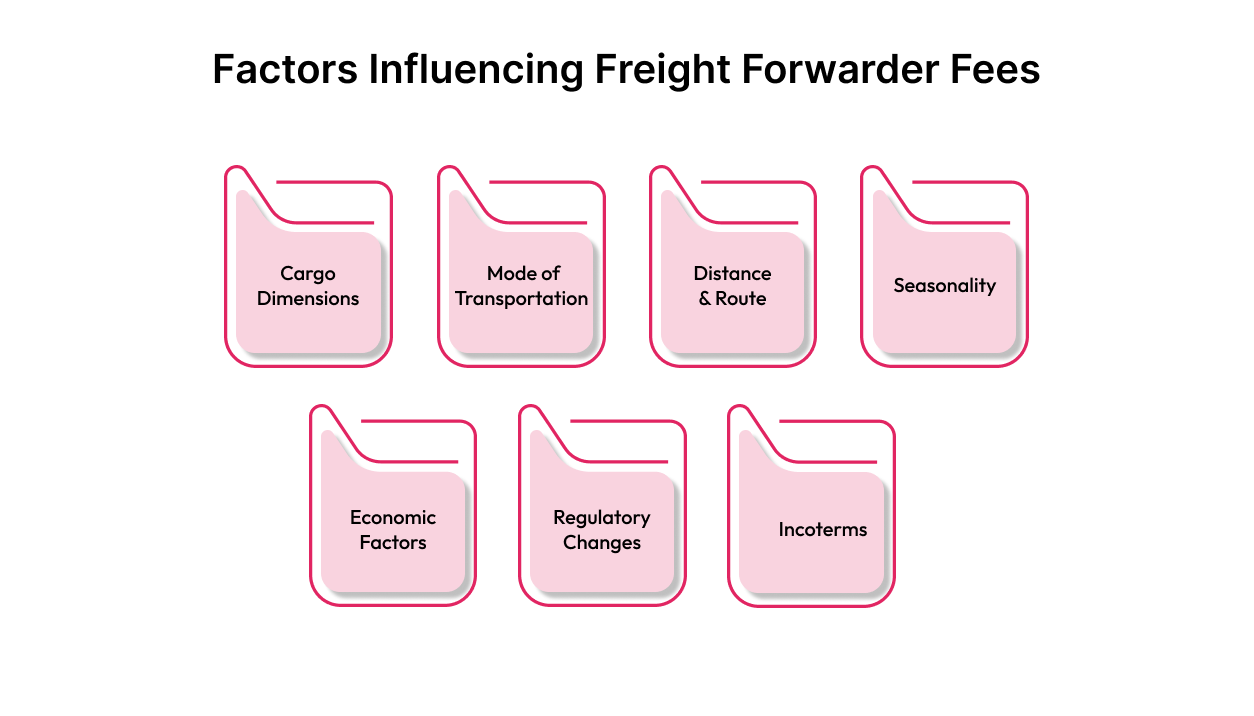
Understanding the key factors that influence freight forwarder fees is essential for businesses aiming to optimize their shipping costs. These factors encompass various aspects of the shipping process, including the size and weight of the shipment, as well as external economic conditions. Here’s an in-depth look at each factor:
1. Shipment Size and Weight
The size and weight of your shipment are primary determinants of freight costs. Larger and heavier shipments require more space and resources, leading to higher fees. Freight carriers often use dimensional weight pricing, which calculates shipping costs based on the volume of the package rather than its actual weight.
This means that even lightweight items can incur higher charges if they occupy a significant amount of space. For instance, a large, lightweight package might be charged as if it weighs more, increasing the shipping cost.
2. Mode of Transportation
The choice of transportation has a significant impact on shipping costs. Air freight is typically faster but more expensive. In contrast, sea freight is more economical for bulk shipments but involves longer transit times. Each mode has its advantages and trade-offs, and selecting the appropriate one depends on factors like urgency, cost constraints, and shipment characteristics.
3. Distance and Route
The distance between the origin and destination directly affects shipping costs. Longer distances require more fuel, time, and resources, leading to higher fees. Additionally, the chosen route can influence costs; routes with fewer stops, better infrastructure, and shorter travel times are generally more cost-effective.
4. Seasonality
Freight rates often fluctuate based on seasonal demand. During peak seasons, such as holidays or harvest periods, the demand for shipping services increases, leading to higher rates.
Conversely, off-peak periods may offer lower rates due to reduced demand. Understanding these seasonal trends can help businesses plan shipments strategically to minimize costs.
5. Economic Factors
Global economic conditions, such as fuel prices, inflation, and currency exchange rates, can influence freight costs. For instance, a surge in oil prices can lead to increased fuel surcharges, raising overall shipping expenses.
Similarly, economic downturns can affect demand for shipping services, potentially leading to fluctuating rates. Staying informed about these economic factors allows businesses to anticipate cost changes and adjust their logistics strategies accordingly.
6. Regulatory Changes
Changes in trade policies, customs regulations, and environmental laws can introduce additional compliance costs. For example, stricter emissions standards might require carriers to invest in cleaner technologies, increasing operational costs.
Similarly, new customs procedures can lead to delays and additional fees. Businesses must stay abreast of regulatory changes to ensure compliance and avoid unexpected charges.
7. Incoterms
Incoterms, or International Commercial Terms, define the responsibilities of buyers and sellers in international transactions. Terms like Free On Board (FOB) and Cost, Insurance, and Freight (CIF) determine who bears the costs and risks at each stage of the shipping process.
For instance, under FOB, the seller’s responsibility ends once goods are loaded onto the vessel, while under CIF, the seller covers costs until the goods reach the destination port. Understanding these terms is crucial for determining freight costs and responsibilities.
By comprehensively understanding these factors, businesses can make informed decisions to optimize their shipping strategies and manage freight costs effectively.
To minimize these costs, businesses can implement several effective strategies that streamline logistics and improve cost-efficiency.
Also Read: Differences Between Storage, Demurrage, and Detention Charges in Shipping
Strategies to Manage and Reduce Freight Forwarder Fees
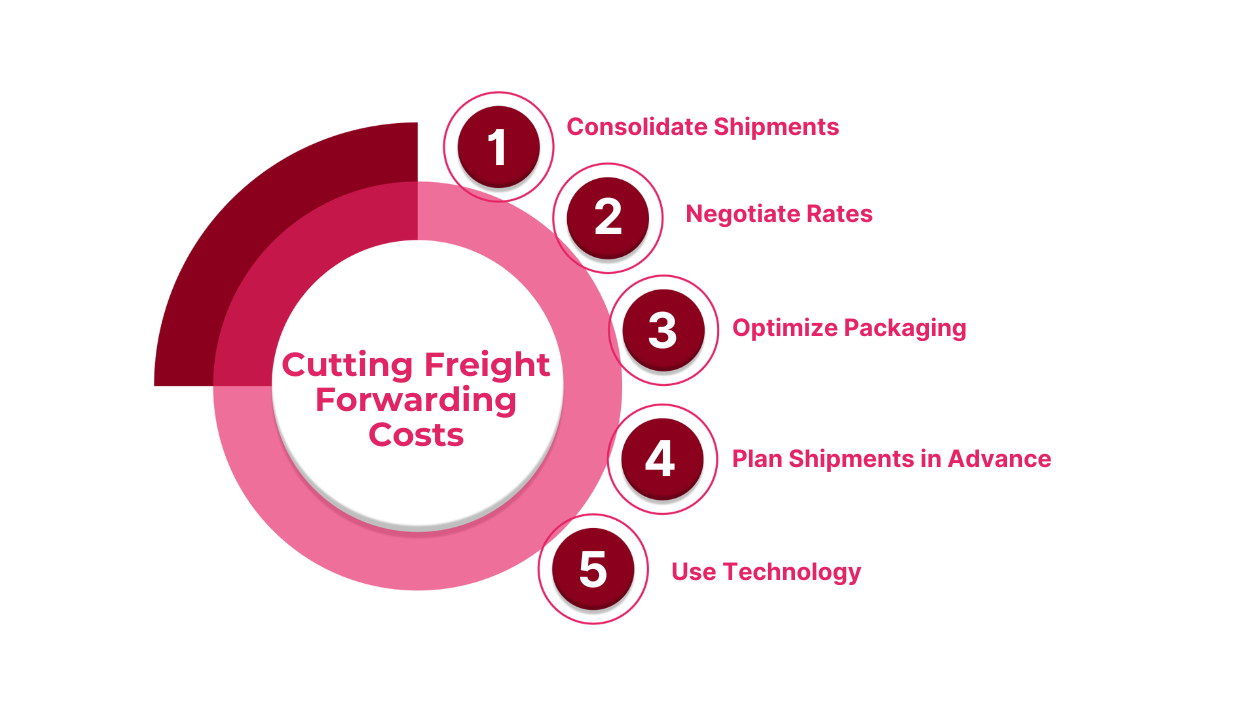
Effectively managing freight forwarder fees is crucial for businesses seeking to minimize shipping costs. Implementing strategic practices can lead to significant savings and improved supply chain efficiency.
1. Consolidate Shipments
Combining multiple smaller shipments into a single, larger shipment can significantly reduce per-unit shipping costs. This approach minimizes the frequency of shipments, leading to lower handling and documentation fees. For instance, consolidating goods from various suppliers into a full container load (FCL) can lead to substantial cost savings.
Intoglo, a digital freight forwarding platform, specializes in door-to-door Full Container Load (FCL) shipping from India to the USA. With Intoglo, you can access instant FCL shipping quotes, manage bookings, and track shipments, all from a single interface. This consolidation not only streamlines your logistics but also contributes to more predictable and cost-effective shipping strategies.
2. Negotiate Rates
Engaging in discussions with freight forwarders can lead to better pricing, particularly for businesses with frequent shipping requirements. Negotiating favorable terms, such as reduced rates for regular shipments or longer-term contracts, can result in substantial cost savings.
3. Optimize Packaging
Reducing the dimensions and weight of packages can lower shipping costs by minimizing the space and weight charges imposed by carriers. Implementing efficient packaging practices, such as using lighter materials and optimizing box sizes, can lead to substantial savings. Additionally, sustainable packaging solutions can enhance brand image and appeal to environmentally conscious consumers.
To promote sustainability, Intoglo offers a Logistics Carbon Emissions Calculator that allows you to estimate the carbon footprint of your shipments. By inputting details such as the mode of transport, origin and destination ports, and cargo weight, you can assess the environmental impact of your logistics choices. This tool empowers you to make informed decisions that align with eco-friendly practices and contribute to reducing your overall carbon emissions.
4. Plan Shipments in Advance
Scheduling shipments in advance can help avoid expedited shipping charges and facilitate better coordination with carriers. Planning shipments during off-peak periods, when demand is lower, can also result in reduced rates.
5. Use Technology
Leveraging digital platforms for real-time tracking and route optimization can enhance supply chain visibility and efficiency. Intoglo USA Export Navigatortool offers a detailed map featuring major wet and inland ports across the United States, which aids in efficient route planning to reduce extra fuel costs.
By integrating these tools into your shipping strategy, you can make informed decisions that enhance efficiency and reduce costs.
Looking to simplify and streamline your shipping process?
Contact us for custom solutions!Conclusion
Understanding freight forwarder fees is essential for effectively managing shipping costs. These fees go beyond the base freight rate and include charges for customs clearance, documentation, and insurance. Various factors, including shipment size and mode of transportation, can impact these costs. By implementing strategies such as consolidating shipments and optimizing packaging, businesses can significantly reduce their freight expenses.
To further enhance operations and effectively manage costs, Intoglo, a digital freight forwarding platform, integrates advanced technological solutions to streamline logistics processes, enhance transparency, and reduce shipping expenses for businesses exporting goods from India to the USA.
Key Features Offered by Intoglo:
- Real-Time Shipment Tracking: Intoglo’s proprietary Glotrack system offers end-to-end shipment visibility. Exporters can monitor cargo in real-time, receive instant status updates, and proactively manage delays. This reduces demurrage, detention charges, and overall uncertainty in shipping schedules.
- AI-Powered HTS/HS Code Scanner: Accurate classification of goods is crucial to avoid customs penalties and delays. Intoglo’s AI-based HS Code Scanner lets users upload photos or descriptions to fetch accurate codes instantly, helping businesses stay compliant and reduce rework and fines.
- HS Code Lookup and Finder: Users can manually search HS codes and applicable tariffs for any product. This tool helps ensure correct classifications, facilitates customs clearance, and supports cost forecasting for duties.
- USA Export Navigator: TheUSA Export Navigator offers a port map, sailing schedules, and the U.S. holiday calendar, helping exporters plan shipments to avoid delays and port congestion, ultimately reducing holding and transit costs.
- Transparent Pricing and Instant Rate Quotes: Intoglo offers real-time rate discovery for FCL shipments with no hidden charges. Exporters get instant rate quotes, enabling accurate cost forecasting and better budgeting.
To better optimize your shipping strategy and reduce freight forwarder fees, contact Intoglo today. Get a free quote and start benefiting from our advanced logistics solutions.
FAQs
1. How do fuel costs influence freight forwarding fees?
Fuel costs are a significant factor in determining freight forwarding fees. When fuel prices increase, carriers often pass on the additional costs to shippers through fuel surcharges. Conversely, when fuel prices decrease, freight rates may temporarily decline, but the reduction is often less dramatic than the increase during fuel price surges. This volatility can make shipping costs unpredictable and impact overall logistics expenses.
2. What is the difference between freight charges and forwarding charges?
Freight charges refer to the direct costs associated with transporting goods from one location to another, covering expenses like transportation, fuel, and handling. Forwarding charges, on the other hand, encompass the fees for services provided by freight forwarders, such as booking cargo space, documentation, customs clearance, and coordination of the entire shipping process.
While freight charges pertain to the physical movement of goods, forwarding charges relate to the logistics and administrative tasks involved in international shipping.
3. How do freight forwarding charges work for international shipments?
Freight forwarding charges encompass various fees associated with transporting goods internationally. These charges typically include transportation costs, customs duties, documentation fees, insurance, storage, and handling fees.
They can vary based on factors such as shipment size, weight, mode of transport, distance, and additional services required. Understanding these costs is crucial for businesses to manage shipping expenses effectively and avoid unexpected charges.


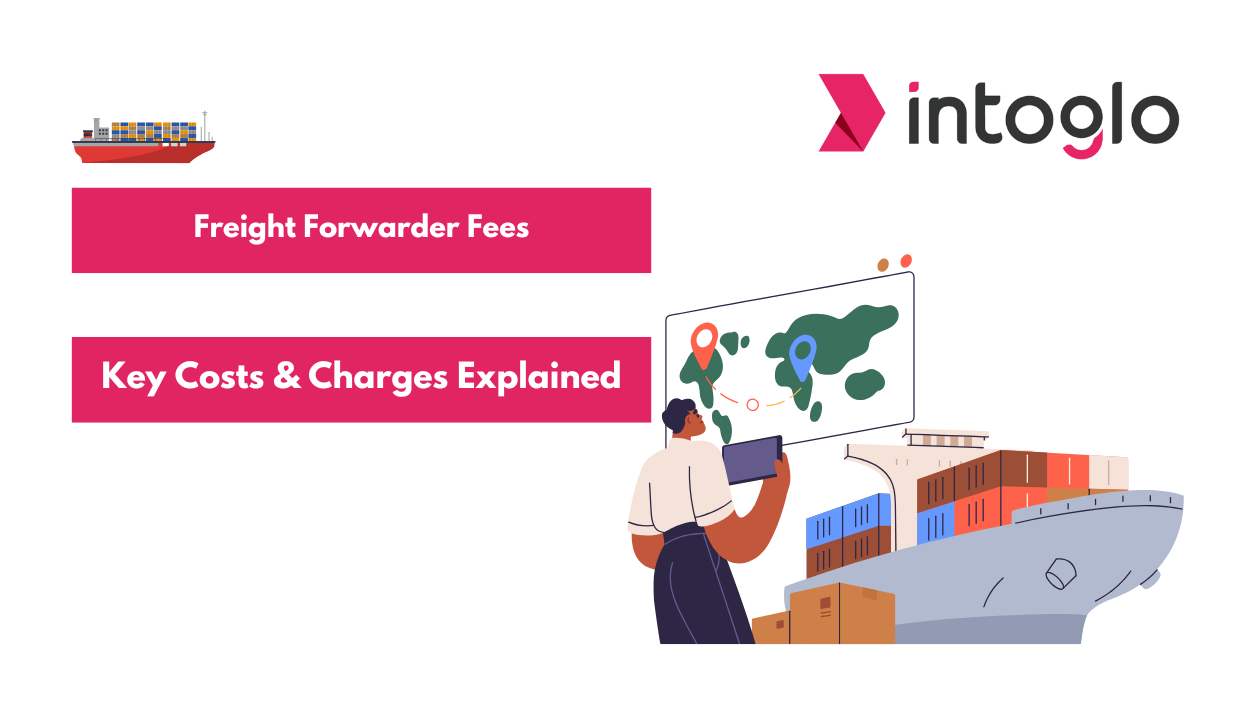

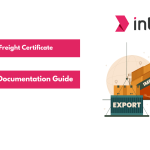
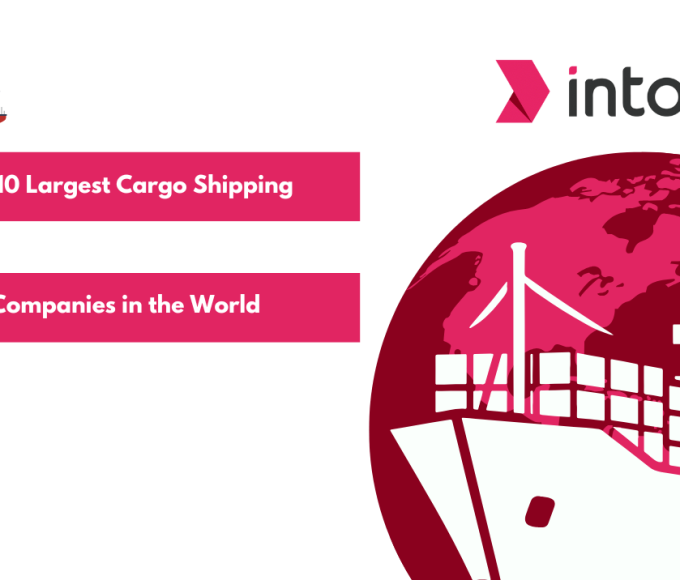
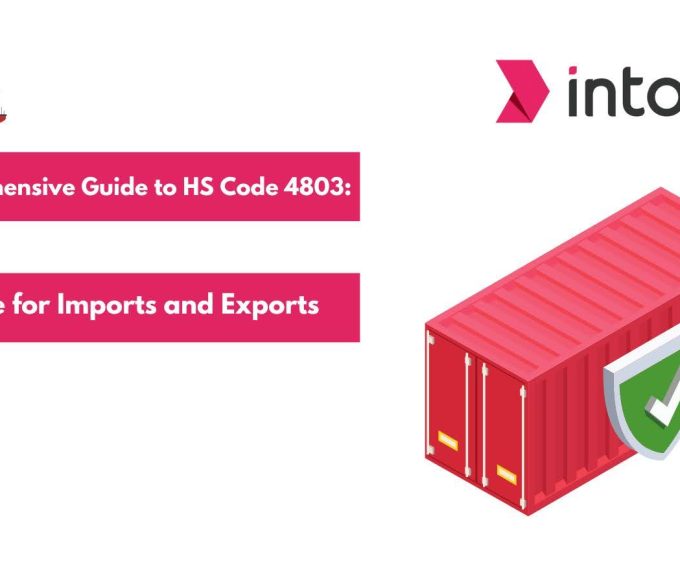
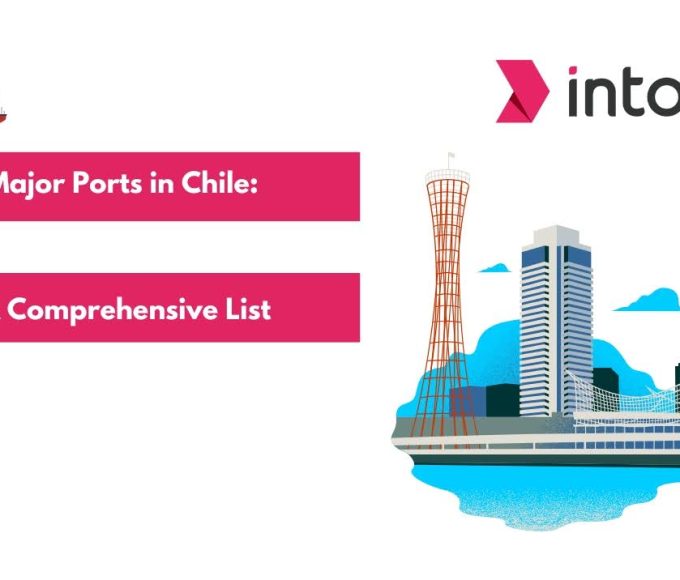
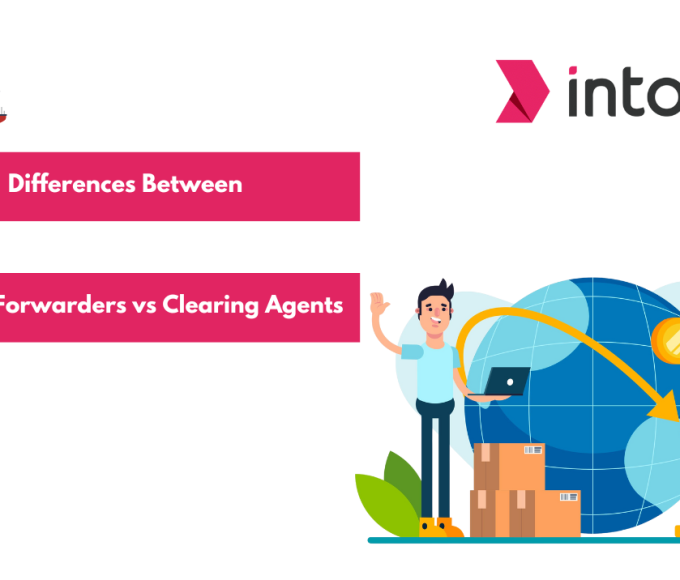
Leave a comment